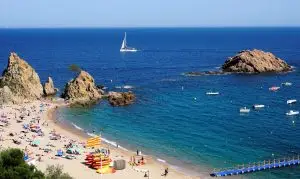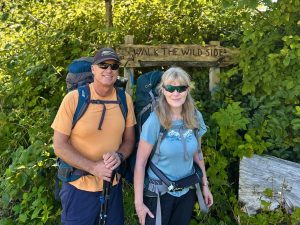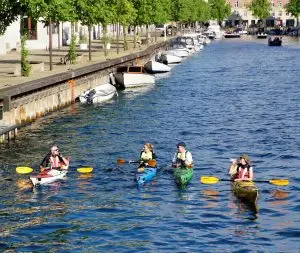Canada has made a significant international commitment to biodiversity conservation, aiming to protect 30% of its land and water by 2030. One of the most exciting ways to achieve this target is through Indigenous Protected and Conserved Areas (IPCAs), where “Indigenous governments have the primary role in protecting and conserving ecosystems through Indigenous laws, governance and knowledge systems” (We Rise Together, Indigenous Circle of Experts, 2018). It’s not just about nature, it’s also about culture, language, and connection to the land.
IPCAs stand on several key principles:
- They are Indigenous-led;
- They elevate Indigenous rights and responsibilities;
- They involve long-term commitments to ecological conservation;
- They promote and protect Indigenous cultural and traditional practices; and
- They can be established through partnerships with governments and NGOs, but remain rooted in Indigenous governance.
IPCAs on the BC Coast: A Model for Conservation and Sustainable Access
The BC coast is home to a growing number of IPCAs that demonstrate how Indigenous leadership in conservation benefits both ecosystems and people. The earliest example is Gwaii Haanas, a region of Haida Gwaii that is co-managed by the Council of the Haida Nation and the Government of Canada. Long before the term “IPCA” even existed, Gwaii Haanas was already balancing conservation with responsible tourism, including paddling.
Several other IPCAs have been developed along the BC Coast across the years, including:
- Hada & Kakweikan IPCA (Ḵwiḵwa̱sut’inux̱w Ha̱xwa’mis First Nation)
- Gwaxdlala/Nalaxdlala IPCA (Mamalilikulla First Nation)
- Gitdisdzu Lugyeks Marine Protected Area (Kitasoo Xai’xais First Nation)
- Clayoquot Sound Conservancies (Ahousaht and Tla-o-qui-aht First Nations)
- Ha`uukmin, Tranquil, and Esowista Tribal Parks (Tla-o-qui-aht First Nation)
- Salmon Parks IPCA (Mowachaht/Muchalaht First Nation and Nuchahtlaht First Nation).
Unlike traditional Western conservation models that often exclude human activities from conserved areas, IPCAs recognize that conservation and land use can go hand in hand. By embedding Indigenous laws and governance into conservation frameworks, IPCAs support ecological protection while often permitting responsible recreational use, such as paddling, in a way that aligns with Indigenous stewardship principles.
Governance Models for IPCAs
Each IPCA reflects the needs and decisions of the Nation or Nations that steward it. Some are:
- Fully Indigenous-run, using traditional laws and governance;
- Co-managed with federal or provincial governments, through formal agreements;
- Managed in partnership with non-governmental organizations (NGOs);
- Or combine Indigenous, governmental, and NGO management, ensuring conservation efforts benefit from diverse expertise and resources.
Regardless of the governance model, IPCAs empower Indigenous Nations to uphold their responsibilities to land and water, while advancing conservation strategies rooted in Indigenous laws, knowledge systems, and stewardship traditions.
What IPCAs mean for BC Marine Trails and Paddlers
For paddlers and organizations like BC Marine Trails, IPCAs represent a unique opportunity to engage with Indigenous-led conservation efforts in a respectful and mutually beneficial way. These protected areas not only safeguard vital ecosystems but can also provide paddlers with well-managed, sustainably maintained access points and routes.
IPCAs encourage a shift from a “right to access” mindset to one of reciprocal responsibilities, where visitors recognize that their use of the land and water comes with the responsibility to respect Indigenous laws and conservation goals. Instead of thinking “I have the right to be here” we ask, “How can I be a respectful guest on this land and water?”
For organizations like BC Marine Trails, IPCAs are an opportunity—not a roadblock. They allow for real partnerships with Indigenous Nations and help support safe, respectful paddling access that aligns with local stewardship. BC Marine Trails supports First Nations in their efforts to create and maintain IPCAs and works to ensure that paddlers understand and adhere to local protocols when traveling through Indigenous traditional territories.
Moving Forward
IPCAs are not inherently at odds with paddling. On the contrary, they create opportunities for respectful engagement with the land and waters, guided by Indigenous knowledge and governance.
Rather than imposing restrictions, IPCAs empower Indigenous communities to uphold their rights and responsibilities to the territory, ensuring that activities like paddling align with traditional laws and contribute to the sustainable stewardship of these environments.
Next time you’re planning a trip on the BC coast, take time to learn whose territory you’re in, what laws and traditions guide visitors to the territory, and how you can paddle in a way that honours them. The BCMT map can help you. It’s not just the right thing to do, it’s a better way to experience the coast we all care about.



